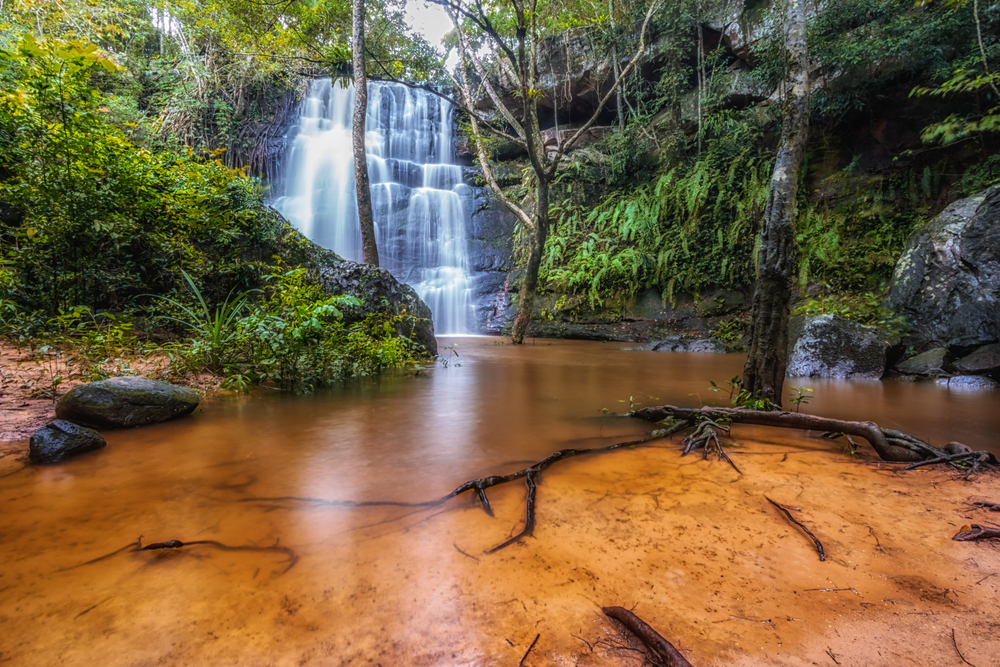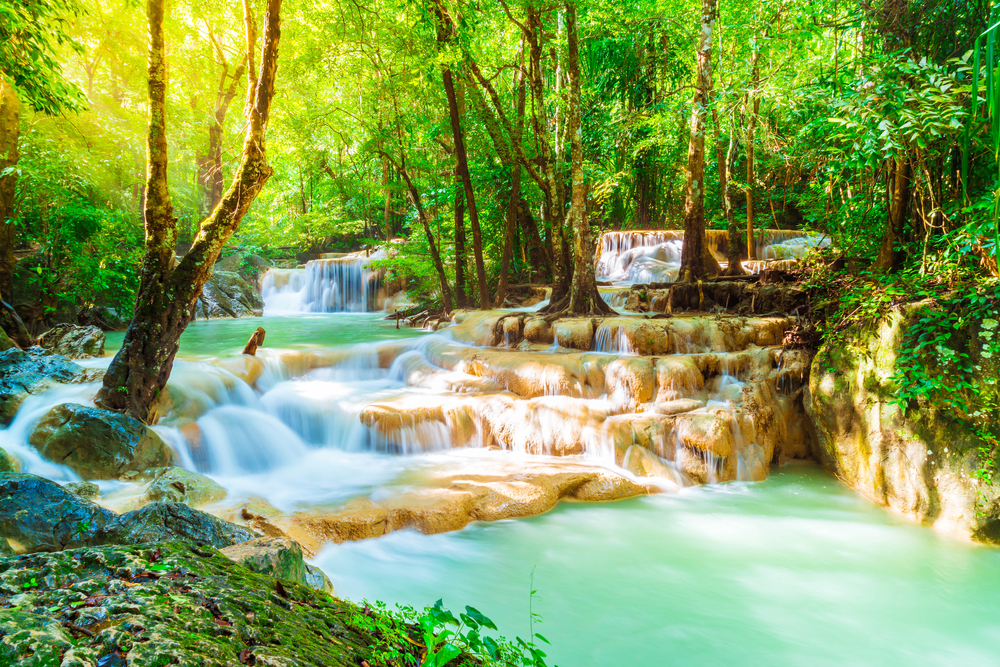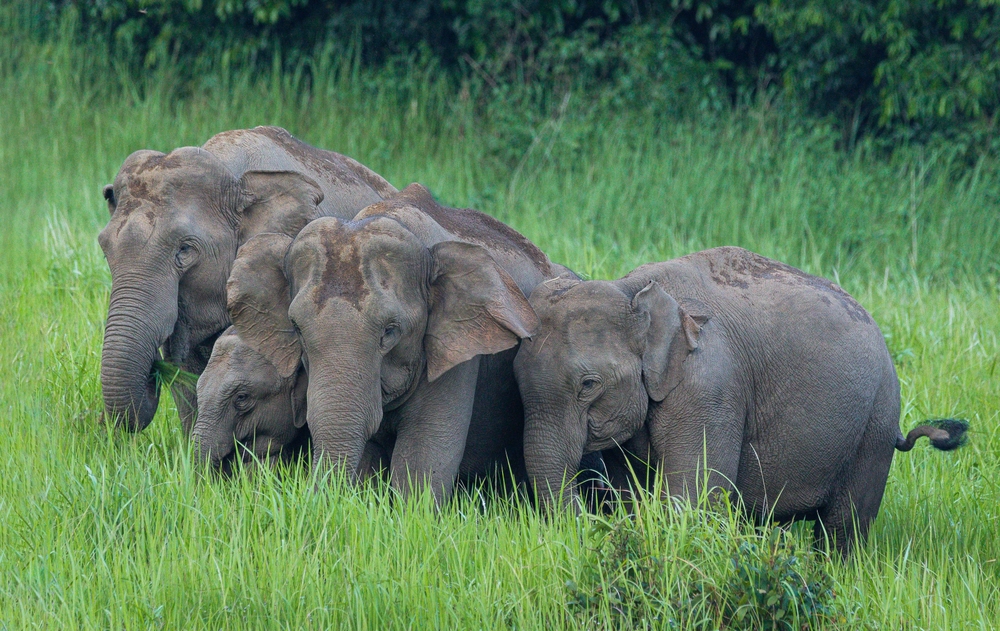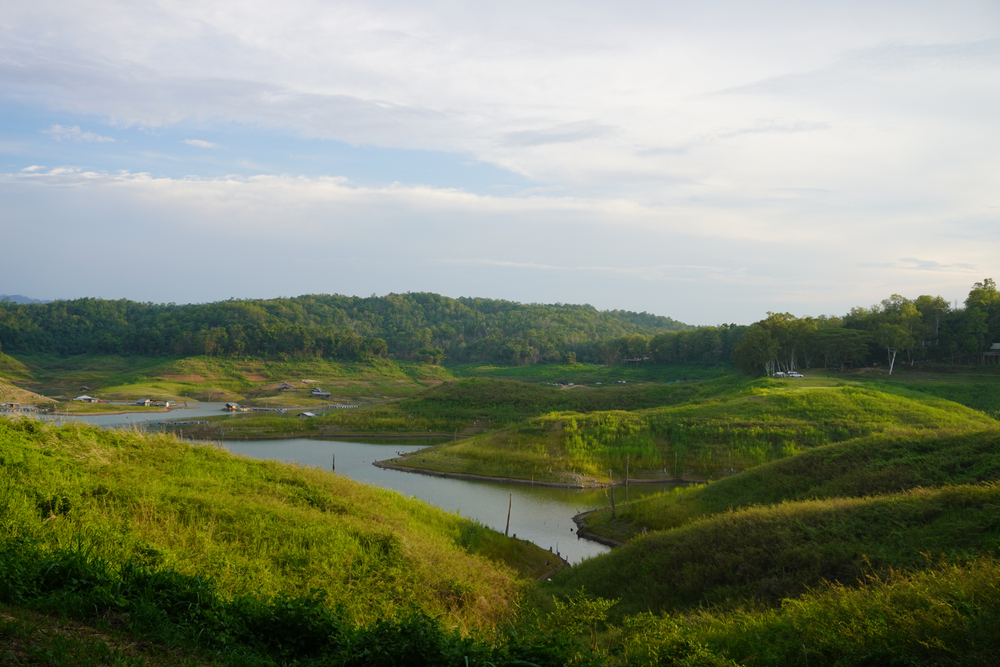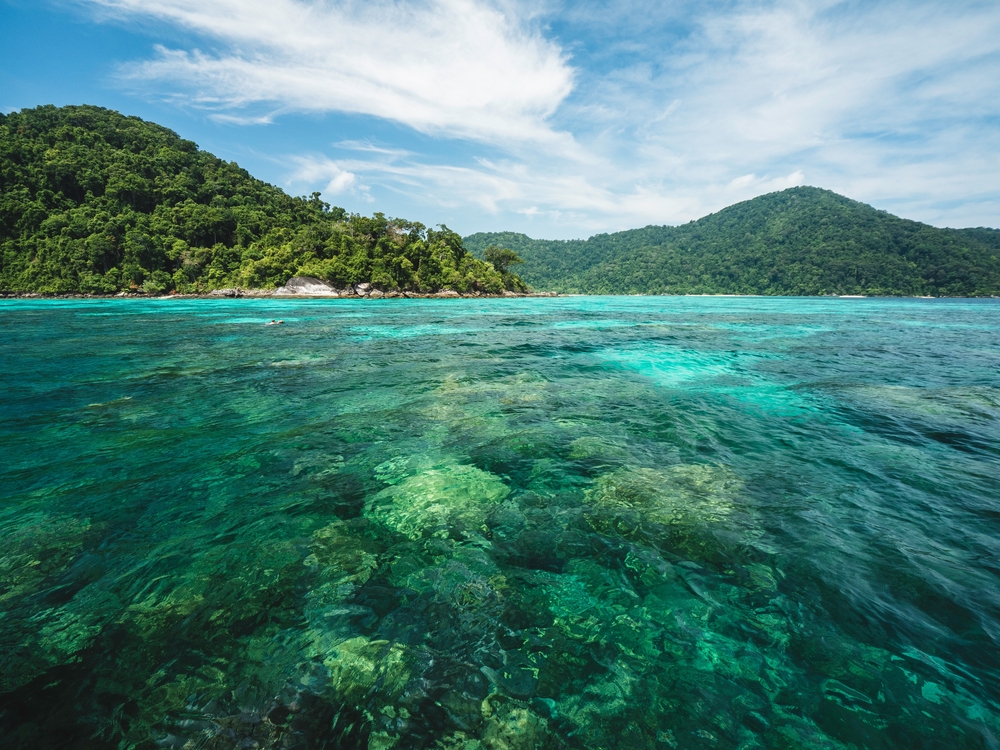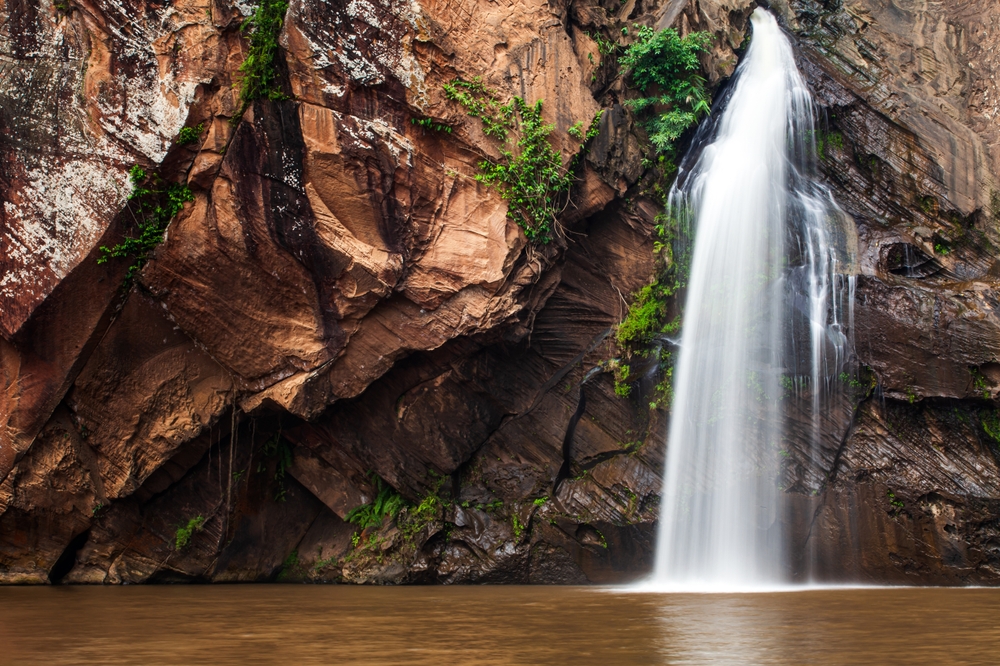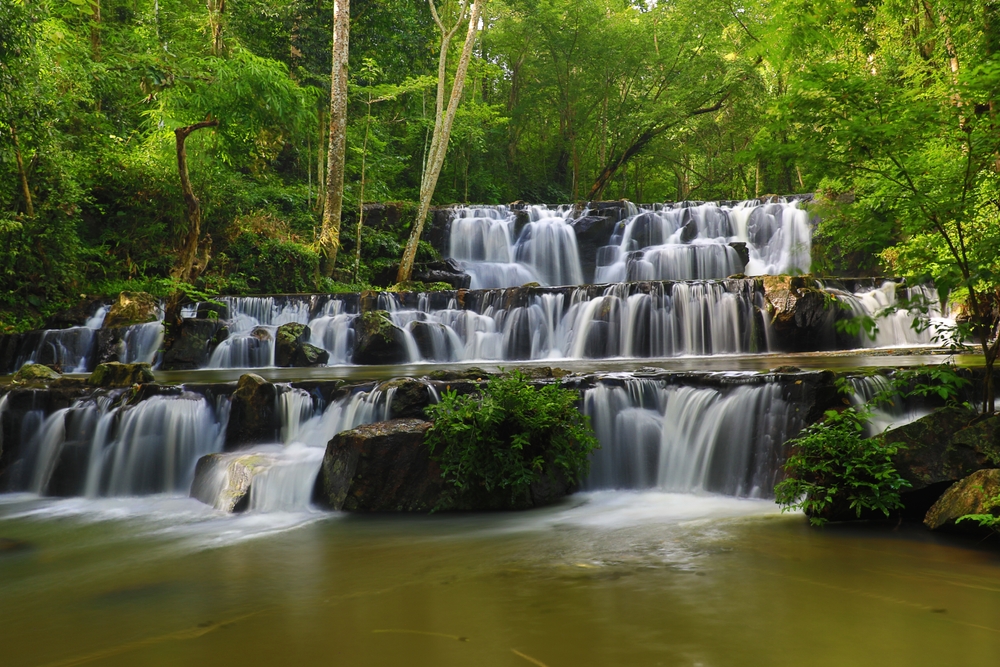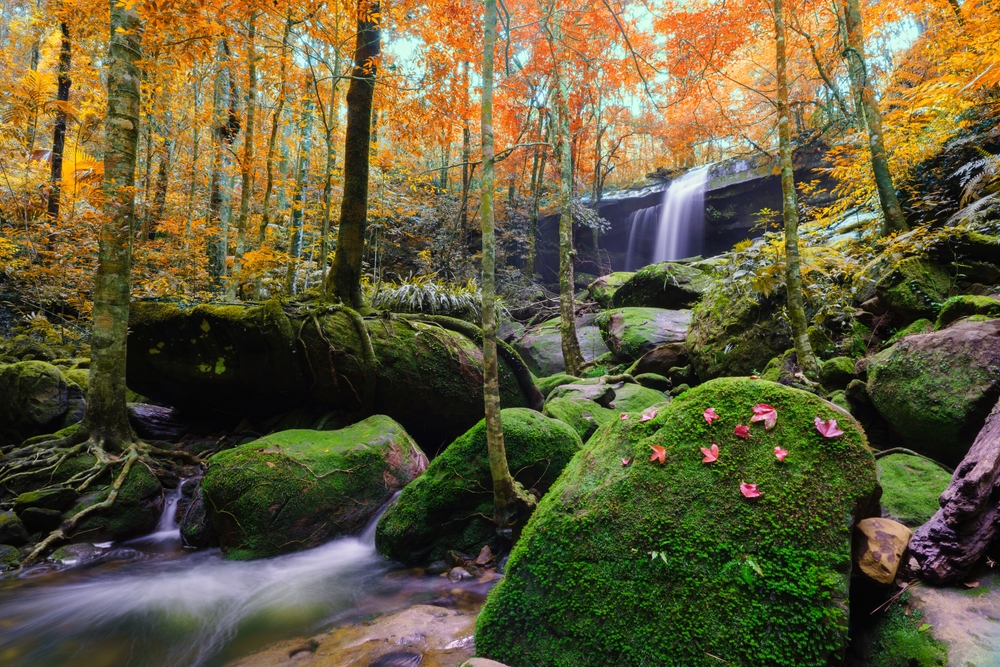Phu Wiang Overview
Phu Wiang National Park, located in Khon Kaen Province in northeastern Thailand, spans approximately 125 square miles (325 square kilometers) and is a site of geological, paleontological, and ecological significance. The park’s name, “Phu Wiang,” translates to “mountain circle” in Thai, referring to the striking ring of hills and mountains that form its natural boundary.
This captivating landscape is characterized by sandstone ridges, verdant valleys, and dry dipterocarp forests interspersed with patches of mixed deciduous vegetation. The terrain is rugged yet picturesque, with several cliffs and escarpments offering stunning vistas of the surrounding countryside.
Among the park’s notable geographical features is the Huai Sai Waterfall, a serene cascade surrounded by lush vegetation, and the Tham Kaew Cave, known for its impressive stalactites and stalagmites. The park is also famous for its fossil sites; discoveries here include the remains of early dinosaurs, such as the Phuwiangosaurus sirindhornae, a sauropod species named after the region. These paleontological treasures have earned the park a reputation as a hub for fossil enthusiasts and researchers alike.
Phu Wiang is home to diverse wildlife that thrives within its protected habitats. Visitors may spot mammals such as civets, muntjac (barking deer), and wild boar. Birdwatchers are in for a treat with species like the red junglefowl, hoopoes, and various woodpeckers frequently sighted in the park. In addition, the park’s streams and wetlands support a variety of amphibians and reptiles, contributing to its rich biodiversity.
Popular features of Phu Wiang National Park include its dinosaur museum, where visitors can learn about the prehistoric creatures once inhabiting the area and view fossil replicas and displays. Hiking trails, ranging from easy walks to more challenging treks, allow visitors to explore the park’s natural and historical wonders. The circular mountain range provides panoramic views, while guided tours to fossil sites offer insights into the region’s ancient past.
Visitors can engage with the park through nature walks, guided fossil excursions, and camping under the stars. Phu Wiang also offers interpretive trails and educational programs aimed at raising awareness about its natural and historical importance. With its blend of scenic beauty and scientific intrigue, the park is a favorite among families, researchers, and outdoor enthusiasts.
Phu Wiang National Park faces conservation challenges, including habitat encroachment and the impact of tourism. However, effective management practices have been implemented to mitigate these pressures. Educational initiatives and community engagement have fostered a sense of stewardship among locals and visitors alike. Additionally, the park’s designation as a protected area ensures the preservation of its unique ecosystems and invaluable fossil records.








































































